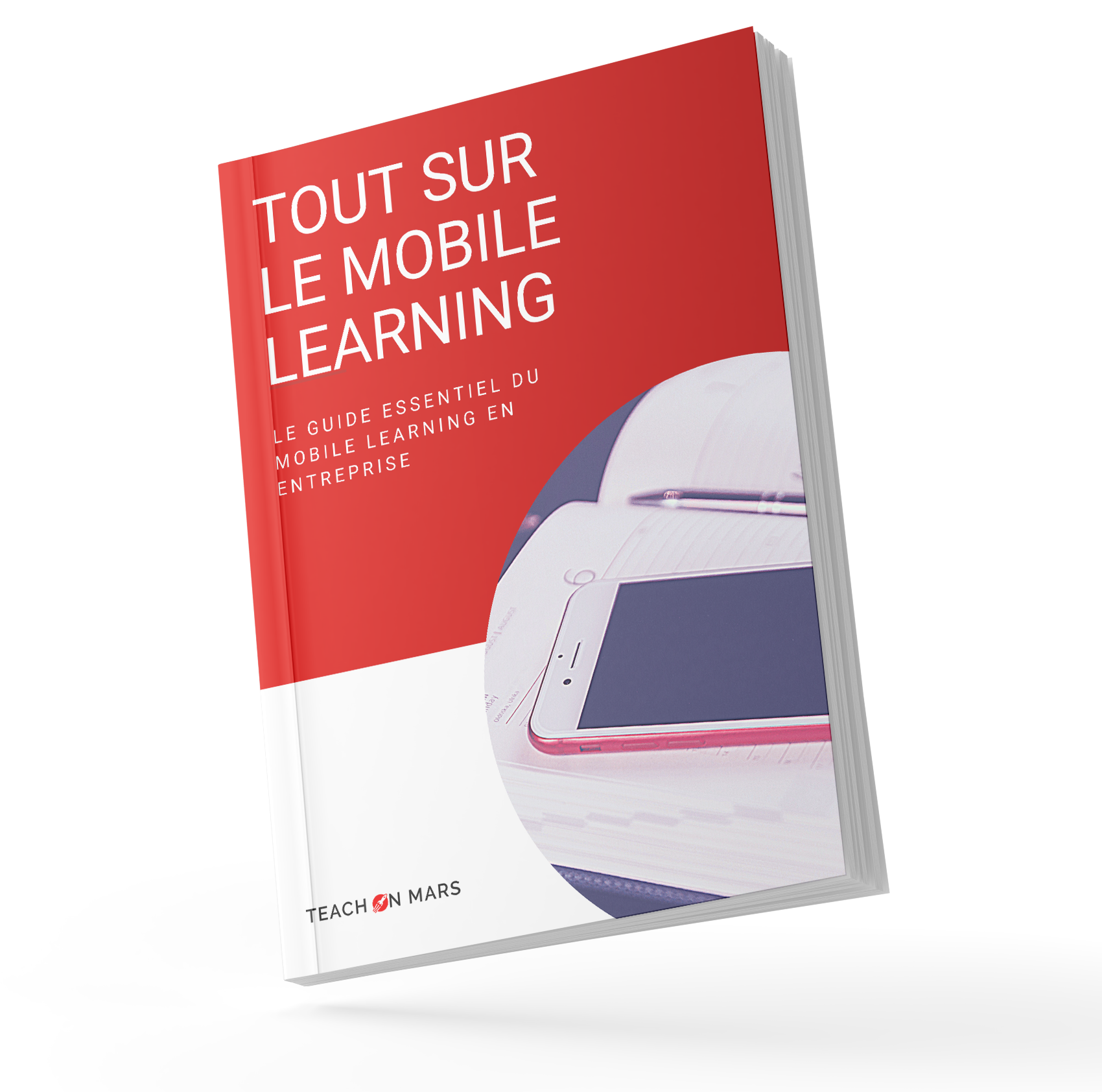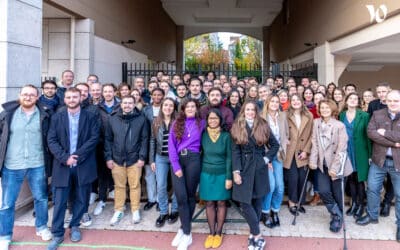The fundamental promise of mobile learning is a clear and compelling one. If we as programme managers, as trainers and as instructional designers can put high-quality learning and development activities on the mobile devices of our learner populations, then we create a potentially endless series of learning moments throughout every individual user’s day.
People, after all, are on their smartphones all day, every day. As they travel to and from work. As they walk the dog or work out. Even – and here there is a deep-seated societal shift happening around us in real-time – on the sofa or in the kitchen in their own homes and in their free time.
So, if we can deliver a learning experience through the device that – we are told – two-thirds of British adults under the age of 35 reach for and interact with within five minutes of waking up every morning, we win the hearts, the minds and (perhaps most critically) the thumbs (!) of a learning community that is active, connected and engaged like never before. Simple, right? Well, in theory, yes. But in practice, the Holy Grail of learners who learn like they use Facebook, Instagram, WhatsApp, LinkedIn or Strava is in fact a lot more difficult to achieve.
David Perring, Director of Research at Fosway Group, calls this absolute need to make learning mobile “being where the eyeballs are”. A beautifully evocative and graphic expression, and one that David himself is quick to qualify by stressing that the challenge is way more than just one of getting the delivery channel right. As he sees it, for an organisation that wants a credible mobile learning presence, getting content onto people’s smartphones is no more than the most basic first requirement. So much so, that it runs the risk of becoming a distraction from the real objective of creating an immersive and involving learner experience that is social, agile and based on human interaction – while all the while remaining grounded in business reality to make sure that learning can be followed up and its impact measured.
The question is not “is what we offer better than other, more traditional forms of digital or non-digital learning?” The question is rather “is what we offer better than Candy Crush?”. Because make no mistake, with 3 billion downloads and an estimated 70 000 miles of thumb- and finger-swiping across smartphone screens every single day, Candy Crush is one of the critical competitors for any mobile application.
I’ve been using the Candy Crush competitor paradigm for over two years now when expressing the Teach on Mars vision for next-generation learning in discussions with existing and potential customers. Initially counter-intuitive, and even potentially shocking, it’s an argument that inevitably ends up striking a chord. Because you don’t need to get too far down the road of the mobile-led learning journey before you realise that a “consumer-grade” mobile experience capable of holding its own alongside the other behemoth apps on just about everyone’s home-screen is not so much an ultimate goal as a non-negotiable starting point.
So far, so good. But beyond the cute marketing-speak and clever questions, how can organisations actually assess whether the mobile-led learner experience they are offering is genuinely “consumer-grade”? Whilst we’re probably not yet at the stage of having hard KPIs we can measure, I would like to suggest three criteria based on what we can see the very best mobile applications doing.
Does your LEX have “Goldilocks structure”?
We all know the fairy-tale. Daddy Bear’s porridge was too salty. Mummy Bear’s too sweet. Baby Bear’s was just right. It’s the same with the rules, the constraints and the structures that you build into your learner experience. Too many, and learners rapidly tire and lose interest (as they have been doing for decades with traditional digital learning platforms). Strip out the prescriptions and set the learners free to self-direct as individuals and as a community, and the learning ecosystem will rapidly establish its own governance. Just ensure that you keep enough judicious structure in place to avoid the risk of losing the focus of your instructional design and the ability to measure and track learning benefits.
Do you make the technology and the content “disappear”?
The technology behind the slickest, most involving mobile experiences is really clever. So clever, that it blends away into the background. Everything flows intuitively. Recommendations and notifications mesh smoothly with the rest of your day. Controls are exactly where you expect them to be. New features appear beneath your fingertips and upgrades barely require explanation or documentation (think about the last time you upgraded the Uber app on your phone, for example). As for content, it’s obviously front and centre in the mobile apps we all know and love and use all the time. And permanently updated and refreshed. But the main focus of the app experience is the interactions between users that the content prompts and encourages. Next-gen learning is not about technology. Or even about content. It’s about connections and communities. Even about culture. In other words, it’s about a human, social experience. A learning experience that is digital, certainly, but which has soul. And if we can’t say that is true about our mobile-led learning offer, then we probably need to rethink it.
Does it enhance a physical experience?
Leading social fitness application Strava stated in 2017 that it was adding new users to its global athletes’ community at a rate of 1 million every 45 days. And that over 8 million activities were being uploaded and shared via the system every week. Not so long ago, “social fitness” wasn’t even a thing, or certainly not beyond the elitist confines of running or cycling clubs. Now, anyone climbing on a bike can compare his performance not just with what he himself achieved last week or last year, but also with that of Tour de France stage-winners. Which potentially makes anyone’s struggle up the slightest incline so much more involving and rewarding. Even better, what started as a cycling-specific app currently supports 33 different sports. And the app’s technology is so smart it can automatically detect which sport it is you are doing in many cases (see point #2 above). So everyone is included, whatever their ability and whatever their activity. Of course, Strava is a particularly flagrant example, given the sporting vocation of the application. But the trend with most modern mobile experiences is away from a 100% digital interaction and towards the enhancement of more traditional, human touchpoints like meet-ups and local community events. Similarly, next-gen learning experiences are being taken into a new dimension with the emergence of immersive “Phygital Events”, where mobile learning technology is used to guide groups of learners through semi-competitive, real-time learning adventures that place heavy emphasis on physical interaction and on the use of all five senses and community endeavour.
Interestingly, all three of these criteria transcend the strict confines of digital learning and see the learner experience being evaluated – at least partly – according to real-world yardsticks that are far-removed from traditional L&D metrics.
Which ultimately should not surprise us that much. That, after all, is exactly how our learner populations themselves will instinctively judge our learning offers in the brave new next-gen learning world.

Adam has been developing and leading Corporate Universities for companies all over the world for most of the last 15 years.





